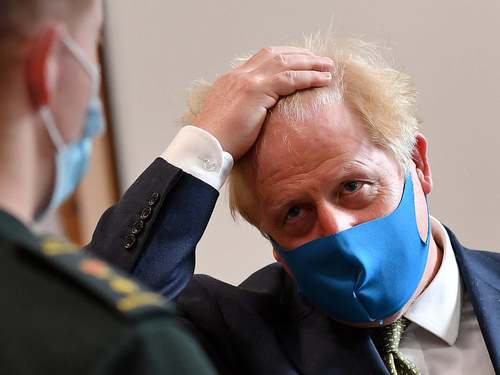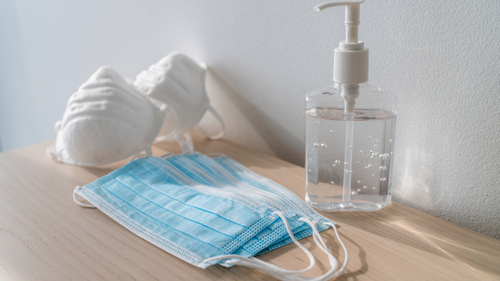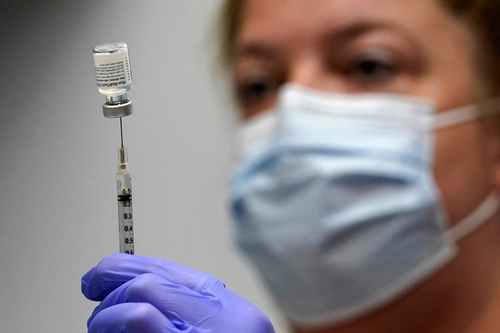Dr Chaand Nagpaul, chair of the BMA’s council, told MPs on Wednesday that confused messaging from the government and lack of a “systemic approach” on policies like mask wearing and social distancing was behind a weekly rise in infections.
Warning that there were “too many examples of potential spread” he told a meeting of the All-Party Parliamentary Group on coronavirus: “At the moment we’re not doing everything we should in trying to contain the virus.
“If I look even at something as simple as our messages on social distancing: we’re told that social distancing is still two metres, or one metre plus.
The government is not doing everything it should to stop a second wave of coronavirus from hitting the UK, the British Medical Association’s top doctor has warned.
The intervention comes as Boris Johnson pointed the finger at Europe and said “swift” action was being taken to prevent localised outbreaks identified on the continent spreading back to the UK.

However, epidemiologists told The Independent that the government’s own policy failures would likely play a part in an “inevitable” increased infection rate in the UK – which still has a higher death ratio than most of its neighbours.
“Do you think any member of the public understands what one metre plus means? What does the plus mean? Many don’t really understand this because it’s not clear and they’re not social distancing.”
He also pointed to potential deficiencies in the government’s mask policy, adding: “If you want to suppress a virus you don’t just make an announcement and then leave people with free will whether to wear them… you then follow that up with a very systematic approach to make sure that happens.
“What I mean by suppressing is you take an attitude that says: we want to do absolutely everything to make sure the infection doesn’t spread. That needs a much more robust approach.”
He warned: “The point is that I’m not sure that sense of clear, single-minded determination to do everything we can is being done and that’s what I mean by suppressing: to really take the attitude that yes, we can resume normal living – you can go out, you can do things, but make sure that we have very clear messages about what is expected of both the public and workers to stop the spread.
“There are measures that can be taken and at the moment I think I see too many examples of potential spread, just walking out into the high street and peering through shop windows. If a hair dresser wears a visor without a mask, that’s not going to suppress the virus. Has that message gone to all employers as to what needs to be done to stop the spread of the virus?
“If you look at the figures at the moment, the last ONS figures from last Friday, the weekly figures, the infection rate has increased. We’re now seeing about 2,700 new cases a day compared to 2,500 the week before. And so I think now is the time we must be much more robust and rigorous about how we mitigate the spread.”
Boris Johnson on Tuesday said there were signs that a “second wave” of coronavirus would hit, but blamed Europe for the potential return. The UK still has a significantly higher death rate than other European countries, but some have seen a rise in the rate of infections in recent weeks.
Britain reported a further 119 coronavirus deaths on Tuesday, taking the official death total to 45,878. An additional 581 people also tested positive, slightly down on recent days.
Academics told The Independent that a second lockdown was unlikely because of a lack of public appetite, but that other measures needed to be sharpened up to prevent a serious resurgence in cases.
Dr Bharat Pankhania, senior consultant in Communicable Disease Control at the University of Exeter said the messaging around the lifting of lockdown had been “unfortunate” and that it was “inevitable” that cases would go up.
“When the prime minister lifted lockdown, I said it was unbelievably premature. There were mixed messages – people don’t listen to the chief medical officer saying we must do this carefully and take precautions, because the virus is still there. But they do listen to the prime minister saying let’s go out and celebrate, and I think that was really unfortunate. Lifting quarantine was a risk and it could be foreseen it was a risk, but we were under pressure form the travel industry and it takes backbone to stand up to that,” he said.
“It’s inevitable that UK cases will go up when you open, unless you are cautious. That public health message of ‘go carefully’ just isn’t there. The virus hasn’t gone away. The only thing in our favour is that it is the summer and people are more likely to meet each other outdoors. That will keep case numbers down in July and August but I am worried about September.”
However, Dr Pankhania said it would not be appropriate to reimpose a full lockdown now: “There is no stomach of a new lockdown. People are losing jobs and businesses are going bust. I don’t think we can go back to lockdown now, other measures should be taken.”
Dr Gabriel Scally, President of the Epidemiology and Public Health section of the Royal Society of Medicine and member of Independent Sage said a larger second wave was unlikely but that localised outbreaks should be expected.
“What we can expect in England for some time to come is localised outbreaks because the government has decided there is an acceptable level of Covid-19 cases. The Joint Biosecurity Centre suggested in a paper in May that the ‘acceptable incidence’ was 1,000 new positive tests a day. I think that is far too high and will result in flare-ups occurring across the country. Hopefully the arrangements in place will enable those flare-ups to be suppressed, but if there are too many of them the capacity at a local level won’t be able to deal with them and they will emerge as a wave,” he said.
“A second wave is unlikely, simply because an awful lot of older people and people with underlying conditions have lost a lot of trust in what the government says is or isn’t safe and they are going to be very cautious about where they go and what they do. The bursts of new cases we are getting now are predominantly among younger people.”
The World Health Organisation on Wednesday also warned that young people enjoying the summer appeared to be behind the coronavirus spike and were being hit the hardest.
Dr Scally also warned that there was “no government strategy for getting rid of the virus”.
“If we were really serious about this, we would be doing a lot more public information than we are doing at the moment, on washing your hands and social distancing and identifying symptoms. There is very little messaging happening now and I suspect if you asked people what were the four symptoms of coronavirus, you wouldn’t get a very high level of accuracy,” he said.
“There is no government strategy for getting rid of the virus. They issued one on 3 March, but the only strategy since then has been for lifting the lockdown. We have got to get better public information and better case-finding and get our act sorted out in terms of the data about where the cases are. This stuff needs to be running like a well-oiled machine, which it isn’t at the moment.”



